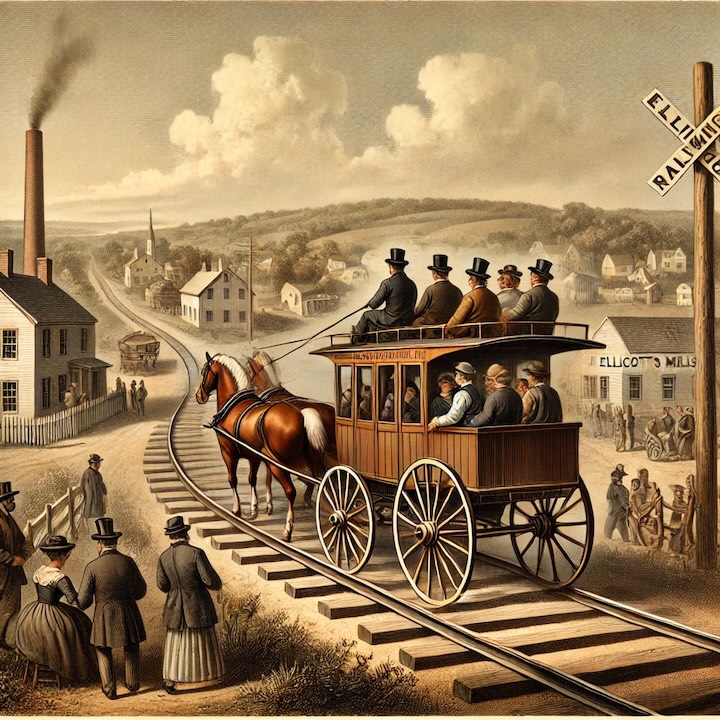
On December 22, 1829, the first passenger railroad in the United States opened. The first railroad line ran from the west side of Baltimore to Ellicott's Mills, a distance of 13 miles. In the beginning, the railroad used horse-drawn carriages, but it was not long before steam engines replaced horses.
On December 22, 1829, the first passenger railroad in the United States officially opened, marking a transformative moment in American transportation history. This inaugural railroad line, operated by the Baltimore and Ohio Railroad (B&O), ran from Baltimore, Maryland, to Ellicott’s Mills (present-day Ellicott City), a distance of about 13 miles. The B&O Railroad was one of the earliest chartered railroads in the United States, established just two years earlier in 1827. Its construction reflected the country’s growing interest in more efficient means of transportation, especially to support economic expansion westward. This initial passenger service offered a groundbreaking alternative to the slow and often hazardous horse-drawn carriages that had been the primary mode of land transport.
In its early days, the B&O Railroad relied on horse-drawn carriages to pull the passenger and cargo cars along the tracks. The concept of a railroad powered by horses might seem unusual today, but at the time, steam locomotive technology was still in its infancy and not yet widely trusted. These carriages were similar to stagecoaches but designed to fit on tracks, giving them more stability and speed than typical road travel. Horses were commonly used to pull carriages on rails because they required minimal training and could operate relatively safely. However, it quickly became apparent that horses would not be a sustainable long-term option due to the limitations of speed, endurance, and efficiency. The line to Ellicott’s Mills was initially built for freight purposes, but passenger transport soon followed due to public demand.
The development of steam engines in the early 19th century sparked a revolution in transportation, and railroads were central to this shift. The first steam locomotive on American rails, known as the “Tom Thumb,” was designed and built by inventor Peter Cooper in 1830, just a year after the B&O Railroad’s first run. Cooper’s “Tom Thumb” was a small, experimental engine intended to demonstrate the viability of steam power for rail transport. During its trial run, the locomotive achieved speeds of up to 18 miles per hour, an astonishing pace at the time. The “Tom Thumb” was famously pitted against a horse-drawn carriage in a race along the B&O tracks, which it narrowly lost due to mechanical issues. Despite this loss, the experiment confirmed the potential of steam power, leading the B&O to replace horse-drawn carriages with steam locomotives over the next few years.
The transition from horses to steam engines revolutionized the speed and efficiency of transportation. Steam locomotives could pull more weight and travel longer distances faster than horse-powered carriages, dramatically changing both freight and passenger travel. By the mid-1830s, the Baltimore and Ohio Railroad had fully embraced steam technology, extending its line westward to tap into expanding trade routes and connect Baltimore more directly with the western frontier. Ellicott’s Mills soon became a bustling hub of activity, with its proximity to Baltimore fostering rapid growth and commerce.
The success of the B&O Railroad’s initial passenger line inspired other regions to invest in rail infrastructure, sparking a railroad boom across the United States. Railroads quickly became the backbone of American industry, facilitating the movement of goods and people across vast distances and fueling economic growth in cities and towns across the nation. The modest beginnings of horse-drawn carriages between Baltimore and Ellicott’s Mills in 1829 set the stage for the vast, interconnected rail network that would eventually span the country, transforming travel, commerce, and the landscape of the United States.
 >
>